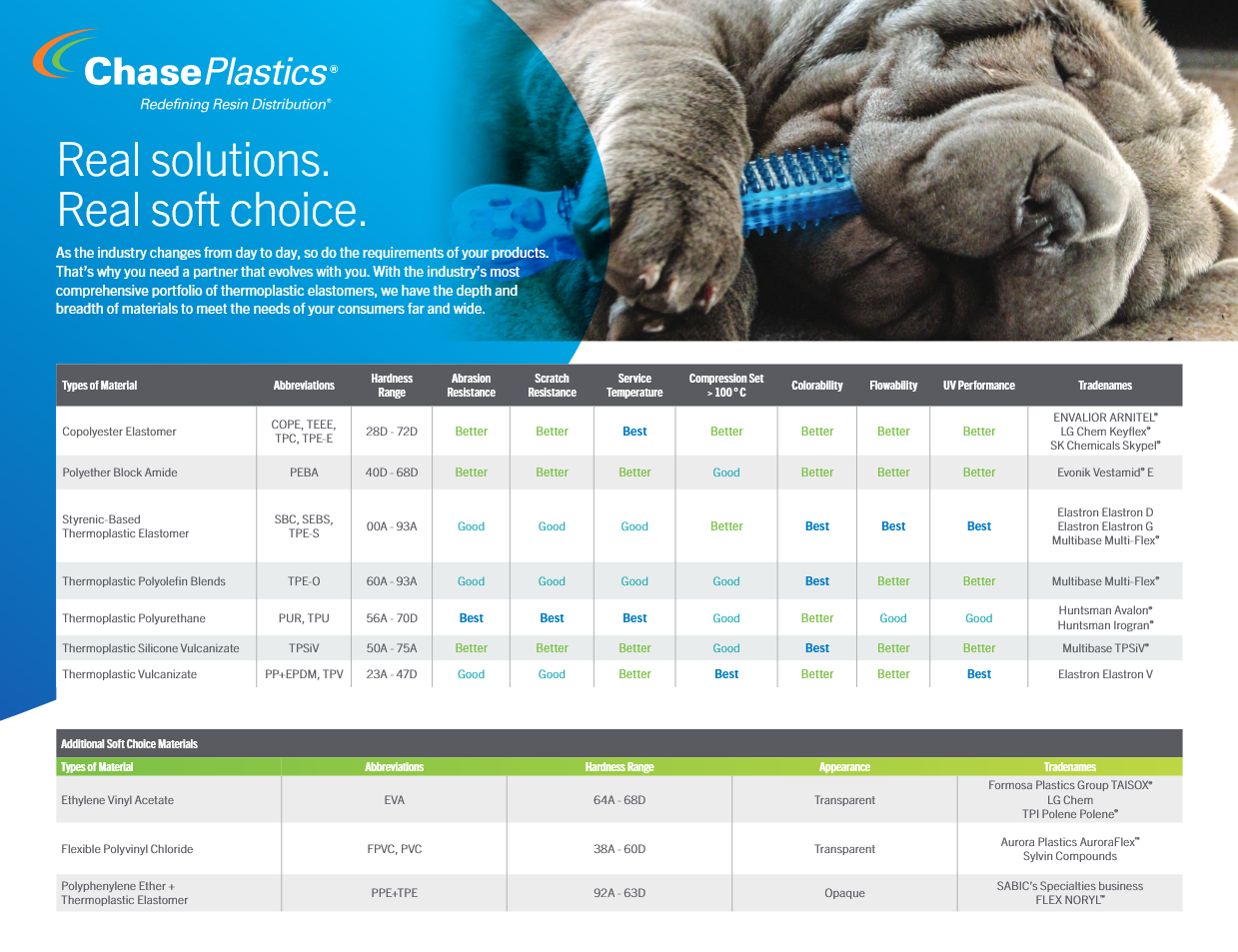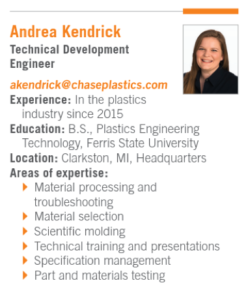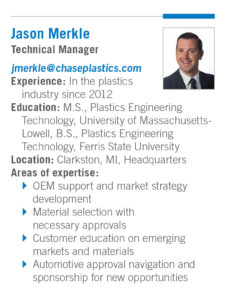Polyetheretherketone (PEEK), the most widely used resin from the polyaryletherketone (PAEK) family, has a firm position at the top of the plastics pyramid and is considered one of the highest performing semi-crystalline materials commercially available. The question becomes – when do I need such a high-performance resin? The answer is when a combination of any of the following properties is required:
- Chemical resistance: PEEK only has one solvent at room temperature (highly concentrated sulfuric acid) and is highly resistant to inorganic and organic chemicals, acids, and bases. PEEK also continues to withstand most of those chemicals up to 200°C as well.
- Tribological performance: without the need for lubricants, PEEK has a low coefficient of friction (COF) values
-
- 0.20 static (40 psi)
- 0.25 dynamic (40 psi, 50 fpm)
- Comparable to unmodified PA 6/6 (0.20 static/0.28 dynamic) and POM/Acetal (0.14 static/0.21 dynamic) used commonly in wear and friction applications. See figure 1 below.
 Figure 1. PEEK coefficient of friction properties versus nylon and acetal
Figure 1. PEEK coefficient of friction properties versus nylon and acetal -
- Fatigue resistance: durable and ductile, making it ideal for metal replacement
- Sterilizable: resistance up to 250°C steam for autoclave and up to 1000 Mrad for gamma radiation without embrittlement. See figure 2 below.
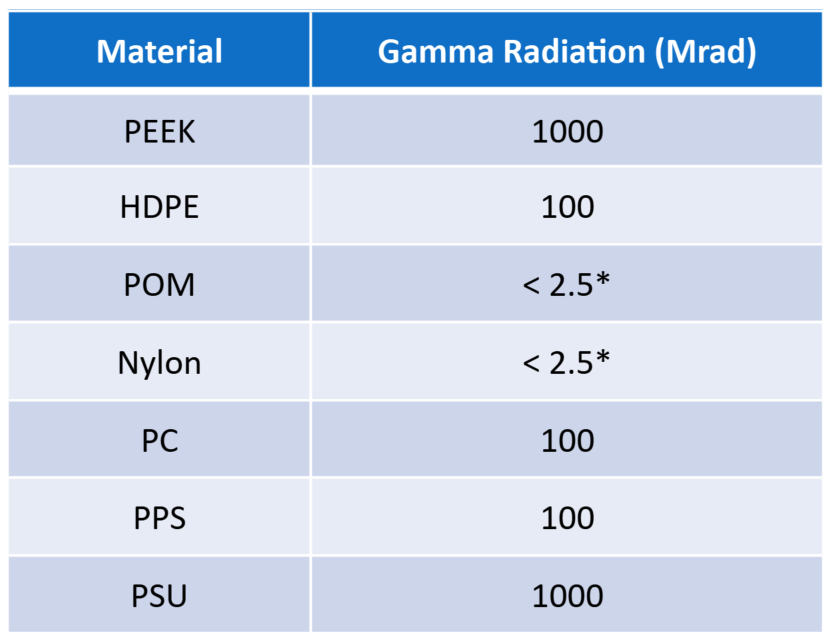
* not recommended
- Heat resistance: continuous use temperature up to 240°C. With a glass transition temperature (Tg) of 140°C and melt temperature (TM) of 335°C, PEEK is one of the highest temperature semi-crystalline materials commercially available.
- Flame retardant: with a limited oxygen index over 35%, PEEK is inherently flame retardant (able to achieve V-0/5VA without a flame package) and has low smoke and heat generation, making it ideal for aerospace applications.
PEEK has found a great fit in markets like aerospace, automotive, healthcare, oil and gas, and semiconductors. Typical applications made from PEEK are compressor rings, electrical connectors, sterilization cases and trays, operating room equipment, wafer carriers, and bearing components.
The Chase Plastics team is here to provide insight into the many grades of PEEK available in the market. Contact us today to see how our technical expertise, diverse product line, and outrageous customer service can help take your product from resin to reality! Whether you are looking for a particular part performance or a basic education, our sales and engineering teams are ready to answer any questions you may have.

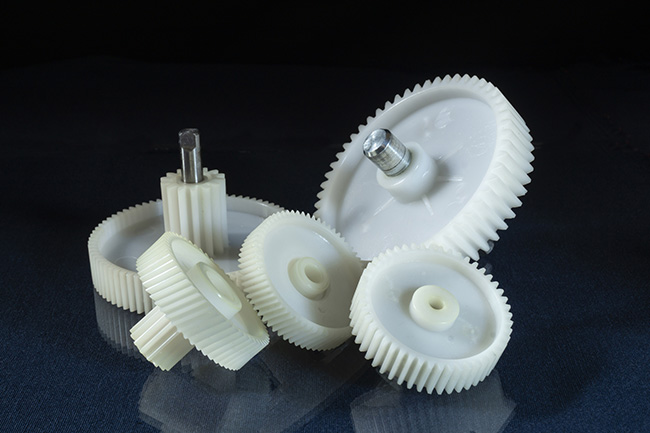 October 2024
October 2024 As the mobility industry continues to steer towards electrification, polymer producers are challenged to provide materials suitable for a new environment. As a plastics distributor, we are seeing changes in application demands relating to almost all aspects of a plastic part, including but not limited to the thermal environment, chemical exposure, flammability, aesthetic design, electrical resistance, and more. While this change has caused a shift away from materials traditionally used for internal combustion, it has also provided an opportunity in the plastics world to set new standards and develop new business for those on the cutting edge of new products and polymer developments. The focus areas below are driving innovation in polymers and plastic compounds to accelerate the adoption and efficacy of electric vehicles:
As the mobility industry continues to steer towards electrification, polymer producers are challenged to provide materials suitable for a new environment. As a plastics distributor, we are seeing changes in application demands relating to almost all aspects of a plastic part, including but not limited to the thermal environment, chemical exposure, flammability, aesthetic design, electrical resistance, and more. While this change has caused a shift away from materials traditionally used for internal combustion, it has also provided an opportunity in the plastics world to set new standards and develop new business for those on the cutting edge of new products and polymer developments. The focus areas below are driving innovation in polymers and plastic compounds to accelerate the adoption and efficacy of electric vehicles:



